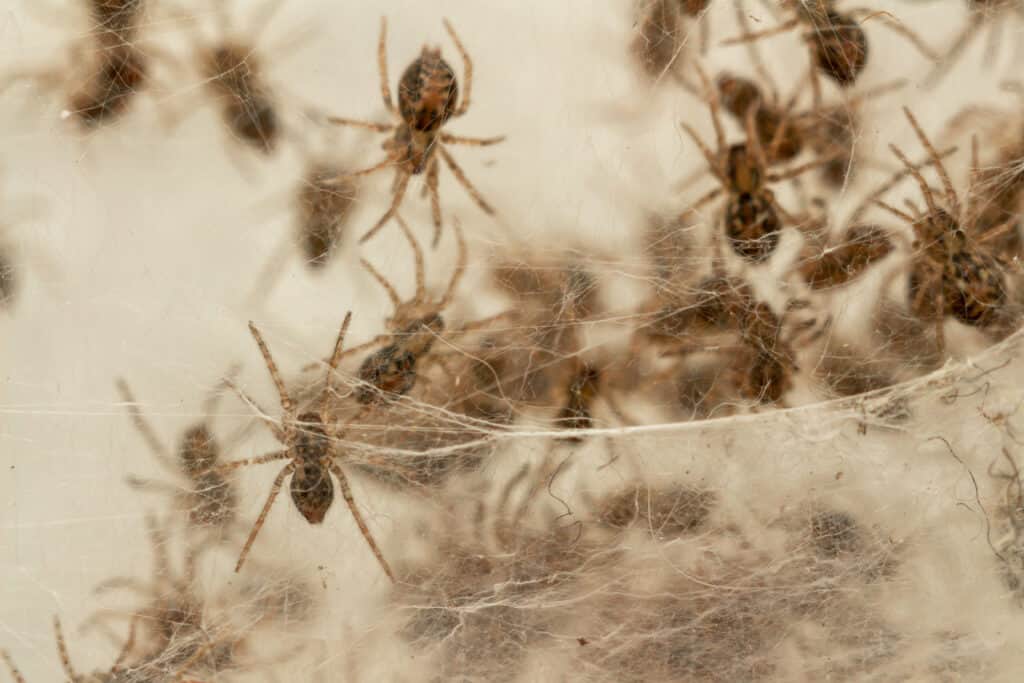Generally, seeing a spider means balance, creativity, and growth. But do you know why we ascribe these descriptors to spider sightings? Discover five meanings and signs of seeing a spider!
5 Meanings and Signs of Seeing a Spider
1. Self Sufficiency
Some spiders do not build webs, they start hunting right away. Instead of waiting around for prey to get caught in their webs, they take matters into their own hands — or legs rather. The spider arrives to remind you of your own abilities. If you’ve been relying too much on someone else, it’s time to tackle the next phase of your life on your own.
Keep your support system but practice the art of self-sufficiency. Some spiders do build webs. And you will never see two spiders constructing the same web. They handle this task solo and they do it from an early age.
As soon as they can they go their own way (it depends on the species), they see if there is plenty of possible food on the horizon, and they make their move rather quickly. For some, it can take a few hours to build a web whereas others can take a few days. Either way, they don’t compare and despair. They just get it done.

Bold jumping spiders are tiny but mighty. They actively hunt their prey!
©Brett Hondow/Shutterstock.com
2. Connectedness
For spiders, connectedness is crucial for its functionality. The web a spider weaves serves as a shelter but most importantly, it is their hunting platform. It is important to know that not all spiders make the effort to build a web, however. Some live in burrows while some species just start hunting.
They rely on ambushing, jumping, or simply chasing their prey. They don’t waste time no matter how they hunt. They are connected to the energy around them, staying alert, and taking opportunities as they come. Even though most spiders are solitary, they don’t lose their connection to the world around them.
Spiders arrive to remind you to lean into your own talents while you remain connected to a network around you. If you’re a web-builder, build your web. If you’re a hunter, go out and hunt. You don’t have to adhere to any one way of accomplishing your goals — rather, you can celebrate your individuality, network as needed, and create a tribe that focuses on mutually beneficial relationships.
3. Growth
They start in an egg sac. Then they move into the spiderling stage. Next is the juvenile stage, and eventually they reach the adult stage. Spiders represent the natural unfolding of life. They represent growth. For example, a garden spider lays her eggs in a large round-shaped sac using silk. Often, it is attached to a leaf near her web.
The egg count can vary, and they tend to lay anywhere from a hundred to a thousand. This is just a first phase for all those little spiders to be. When the spiderlings emerge, they go through a whole process of growth until they start using a technique called ballooning. This is when they release silk threads up in the air. They are moved by the wind to new locations, and then they continue to grow to the juvenile stage.

Spiderlings sharing a webbed environment.
©Ivan Semenovych/Shutterstock.com
They go through more transformation until they get to adult stage. The males are ready to seek the females for mating and the process begins all over. Spiders represent the many phases of life you pass through as well. They remind you that life is about continuous evolution and that means letting go of what has passed to make way for something new.
4. Creativity
Each species has its own web design. Some create circular shapes with radial lines and sticky silk, and others go crazy with a zig-zag shape. They build their webs based on the environment, prey availability, and potential of web damage.
There is quite a bit of thinking and planning that goes into building their webs. So, when spiders arrive to deliver a message, they’re reminding you of your own ingenuity. Even when your back is up against a wall, you are resourceful. Center yourself, consider your options, and trust your innate inventive nature.
5. Rebirth
Spiders go through a molting process, which is when they get rid of the old exoskeleton as it has become too small or too damaged for them. They are now ready to accommodate new vehicles to their growing bodies. This is a critical process for their growth, development, and ultimately for their survival.
They go on with their normal activities such as building their webs, hunting, and reproduction after this process. If you’re at a stage when you’re ready to let go the parts of you that are too damaged or too small, embrace the new phase. You’re evolving.
The photo featured at the top of this post is © iStock.com/LizMinkertJohnson
Thank you for reading! Have some feedback for us? Contact the AZ Animals editorial team.






